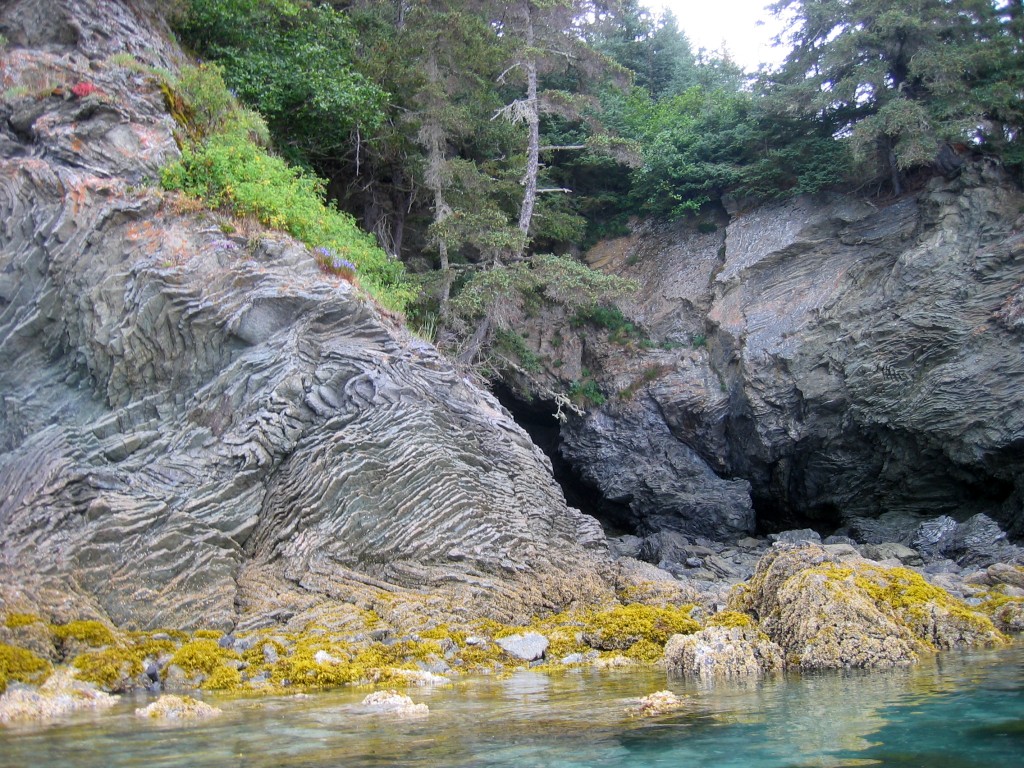Originally posted by eskimo2
These rocks were formed in Mexico by layers of petrified microscopic sea critters. Each layer represents about 1,000 years. According to our guide, continental drift brought them all the way to Alaska and Kachemak Bay:

Historical Geology was a subject I enjoyed in College.
My notes from 1992:
Geomorphology
Northern Kachemak Bay: Northern side of the Watershed has layers of progressively younger Tertiary sedimentary rock, coal, and beds with plant fossils can be found along the bluffs. Common rock types include shale, sandstone, coal, and claystone, derived from sediments that were deposited in the Cook Inlet trough by former stream systems.
Southern Kachemak Bay: Southern side of the Watershed contains older igneous and metamorphic rock dating back to the Jurassic Period. The McHugh Complex is an accretionary wedge. Argillite, graywacke, pillow basalt, and banded chert form a tectonic mélange of heavily deformed and broken rock. The cliffs along the shorelines in Halibut Cove offer good examples of the twisting and contorted rock layers that result from pressure, subduction, and uplift. The green, purple, black, red, gray, and layered bedrock are layered creating interesting outcrops along the shoreline.
Eskimo's guide info in more detail.
Chert is formed by the consolidation of layers of silica ooze that contain skeletons of marine microorganisms called radiolarians. These silica skeletons sink to the bottom of the ocean. As the crustal plates move, they carry these consolidated silica-rich layers along until subduction occurs. It is then subjected to more heat and pressure to form chert.Another common rock type, argillite, is a slightly metamorphosed form of shale. The cobbles found on Kachemak Bay's beaches are often composed of graywacke, and rounded sandstone created by turbidity currents.
I hope I can pass some of this crap onto my 5 year old son before I leave this Earth. I wish to take him to Grand Canyon, Yosemite, Shiprock, Bryce, Tetons, Glacier, Alaska, Yellowstone, etc. Also the only place on Earth Blue Galucophane Schist can be found, in Oregon. Instead of the seafloor colliding and going under the Continental Plate (subduction), the opposite thing occurred (obduction).